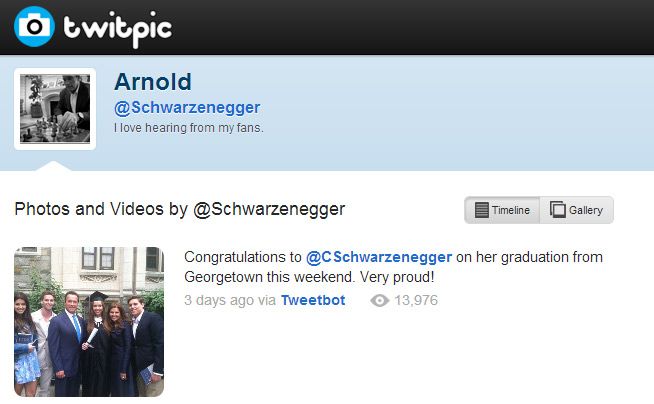Before Noah Everett launch Twitpic in 2008 you couldn't share images on Twitter! Crazy, huh? Noah taught himself to code and doesn't have a CS degree. In this exclusive interview he shares his story of learning enough code to make Twitpic (which made him millions in ad revenue), his tips for beginners and his new email app, Pingly.
Hey Noah, thanks a lot for doing the interview! Could you give us an introduction?
Thanks for having me Pete and hello everyone! My name is Noah Everett and I’m based in Charleston, South Carolina, where my wife and I live with our dog Lou.
I’ve been tinkering with programming since I was around 13 years old when I spent pretty much every waking moment on the computer. The first programming language I started with was Visual Basic and from there I branched off into C/C++ and eventually PHP which started me down the web development path.
My last startup was a photo-sharing app for Twitter called Twitpic. It started as a side project I built over a weekend in early 2008 and became one of the largest photo sharing sites on the internet during that time. We peaked at around 30 million users and it was acquired/taken over by Twitter in 2014. My current project is an email and team chat app called Pingly.

I did some research and read you left school at 15 but were too young to get to college. Can you tell us about that and how you taught yourself to code?
I was home-schooled from 2nd grade through high school and thanks to my mom’s motivation I was able to graduate at 15. I was able to combine 4 years of high school into 2 by doing double the school work. I wasn’t thankful then, but I am now!
This was actually a pivotal point for me since the college I was planning on attending to pursue a degree in music wouldn’t let me enroll that young. So instead I went to the bookstore and jumped headfirst into learning computer programming. I ended up getting my first programming job a few years later with no degree.
I believe you did some web development jobs before Twitpic. Can you talk us through how you first got hired?
After doing mostly Windows application development with Visual Basic in my early days, I found PHP which made building websites so easy, at least compared to the other tech stacks available then. I built little websites and my own personal blog with it. I had some friends who worked for a local tech company where I was able to eventually get a job doing PHP and sysadmin work. I was over the moon that someone would pay me to do computer programming, something that I loved to do all day long.
I read that you made Twitpic in a weekend. Tell us all about how and why you made it!
I was always building something, most of which never got much if any usage. I got the idea for Twitpic in early 2008 after using Twitter and seeing people share Tinyurls. Twitter was hard limited to 140 characters then and had no image uploading feature at all.
I had an image sharing site I had previously built that basically allowed you to upload an image and gave you a URL to share that I used as the base for Twitpic. I spent the weekend ripping the code apart and re-working it to work with Twitter’s API.
The big “aha moment” was when I realized I could hook the comments on Twitpic back into Twitter by sending it as an @reply to the user who posted the image. This was a key part to Twitpic’s viral growth. That, plus timing.
Twitpic had seven employees including your parents! What were some of the technical challenges in making Twitpic pretty much on your own?
Mom and dad were employes #1 and #2. They saw how stressed I was trying to keep up with Twitpic’s growth that I think they felt bad for me and came on to help. Mom did customer support and moderation and dad managed the back office.
Twitpic was growing so fast that I could barely keep it running and we had frequent downtime from overloaded servers. I was actually buying old Dell Poweredge servers from ebay which I would setup temporarily in my apartment to provision, then drive them 4 hours in my parent’s van to the datacenter.
The problem though was that by the time I had done a batch of servers that way, it had already out grown them. I eventually moved to another datacenter which I could lease hardware from instead of buying/setting up my own. I worked a full-time job for the first year too while doing Twitpic on the side and it took another 6 months until our first technical hire came onboard.
I believe you were making $3m in ad sales annually while Twitpic was operating. Can you tell us how that felt being catapulted to success at a young age?
When I first took the plunge to do Twitpic full-time I only had enough money in my bank account for a few month’s rent and I wasn’t able to pay myself for a few months later. Honestly, I think I was running on so much adrenaline and working to just keep Twitpic up that I didn’t have time to pay attention to the fears or doubts, I just jumped in and did it.
Thankfully, revenue grew very quickly in 2009/2010 and I was able to hire more people and get our scaling issues under control. And truly, I thank God for the privilege to do Twitpic and give Him all the credit for that adventure.
Can you tell us what a typical day for you looks like just now?
It’s funny to me that remote jobs are so popular now, but we were doing that with Twitpic in 2009. I worked from my apartment and everyone else worked from theirs. We eventually got office space, but honestly it was hardly used. I still work from home these days but now on Pingly and thankfully have the company of my wife to enjoy.
Do you have any tips for people that want to learn to code in order to start a business rather than do a 9-5?
If you’re financially stable enough to jump into your own business full-time, then that’s great, however don’t feel like you can’t try and start something on the side first while working a 9-5. I did that with Twitpic in the beginning and everything I built then, I built for fun. So if it failed, no big deal, try again with something else.
These days there are tons of free resources online to learn how to code, way more than I could have dreamed would be available back when I started learning to code around 1999.
The best way to learn how to program is to learn by building something that interests you. If you’re looking to start a business, start by trying to solve an issue you’re having, chances are someone else is having the same issue.
Can you tell us about Pingly and your plans for the future?
The best way to think of Pingly is to imagine if Gmail and Slack were put a single app. Pingly hosts email for you and your team on your own domain and has team chat built into the same interface. It took a few years and iterations to get here, but I’m very happy with the product that’s out now.
Some have been saying email is dying, but it’s not going anywhere and even team-chat has its issues with always having to be “available” and notification overload. I think both types of communication, synchronous (chat) and asynchronous (email), have their place and work well when used appropriately.
I’m currently doing Pingly solo which has been fun to get back to just building something I like and want to use. Next steps, I’m working on releasing SMTP access for sending and IMAP so you can connect any email client you want to Pingly.
I would appreciate any feedback anyone has on Pingly. It’s free to use with unlimited users and with email hosting on your domain now.


